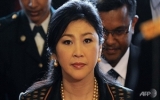Asian economies faced with key challenges in next decade: Australian economist
David Gruen, executive director of the Treasury's Macroeconomic Group, made the remark at an economic forum entitled "Asia's Economic Challenges and Policy Choices" held by the Australian National University (ANU)'s East Asian Bureau of Economic Research.
Gruen said in the past decade, Asia has accounted for over half of the world's economic growth. Even if excluding the advanced economies of Asia, the contribution of emerging Asia was almost a half.
Australian Treasury predicted that Asia will continue to contribute half of the world's economic growth at least in the coming decade and possibly beyond. But the growth will finally slow down to reflect the factors of slowing population growth and the maturing of technological catch-up, Gruen said.
To achieve the Phase 1 scenario, Asian economies have to overcome a number of substantial challenges.
"The first is ensuing trade remains inclusive and open," he said.
The export-led growth model has served Asia's development well because, among others, technological transfer coming from trade helps drive productivity growth.
"In economies of scale, exports can help growth. The import of world-class institutions and ideas from integrating with the rest of the world is crucial," he said.
Singapore, which has been consistently open to trade for decades, is a chronicle example of how economy with few natural endowment can become rich as part of the global trading network.
Future trade arrangement needs to be inclusive. Both the RCEP (Regional Comprehensive Economic Partnership) and the TPP (Trans- Pacific Partnership) will go towards promoting a rule-based trading partnership in the region.
TPP is the economic centerpiece of U.S. rebalance to Asia but yet to include some of the big regional players such as China, India and Indonesia. Meanwhile, RCEP is less ambitious but potentially more inclusive.
The challenge for the region is to ensure that over time TPP and RCEP will converge or walk towards an open regional market, Gruen said.
The second challenge is dealing with demographic challenges. Asia's most significant endowment is its labor. But the picture is different in different parts of Asia.
China, Japan and South Korea are already faced with an aging population which put pressure on their pension systems, labor markets and health care.
India and Indonesia have one of the youngest demographic profiles in the world. But if these young people can not find employment and earn satisfactory income, they can become sources of social and political instability.
"Catching the demographic dividend is a challenge itself," Gruen said.
He called on governments to take measures to close gender cap as a way to secure strong medium-term growth.
The third challenge is managing complex and potentially freud process of capital account and financial market liberalization.
"Possibly even more significant than regional integration on trade and more risky than managing changing demographic profiles is handling the opening of the region to freer flow of capital without overwhelming what in most Asian economies have been sheltered financial markets," he said.
For example, the financial opening in China represents huge opportunities but also significant risks. Despite China having the second largest economy in the world, accounting for 15 percent of the world's output at purchasing power parity, the Renminbi accounts for only 2 percent of the world's foreign exchange turnover. China's stock markets account for 7 percent of the world 's stock market capitalization and China's bond market accounts for 5 percent of global bond outstanding.
"This means China could grow very fast even when it does open up, but opening also means exposing the domestic financial system to outside market forces in a way that China hasn't experienced before," Gruen said.
"A cautious measure and prudent integration may be preferable in gaining reforms."
The fourth is avoiding catastrophic environmental harm including dealing with climate change in longer term.
Talking about China, Gruen quoted that of the world's 20 most polluted cities, 16 are in China. Half of the Yellow River is biologically dead. And only 2 percent of urban citizens in China are breathing clean air by EU standard.
Gruen said environmental issue has imposed real constraints on not only the quality of Chinese people's life but also their productivity and live expectancy.
Xinhuanet
 Malaysia, Singapore step up cooperation in environmental protection
Malaysia, Singapore step up cooperation in environmental protection
 Malaysia's digital economy projected to reach 31 billion USD in 2024
Malaysia's digital economy projected to reach 31 billion USD in 2024
 Opportunity to enhance the position of the Global South
Opportunity to enhance the position of the Global South
 Thailand to build new bridge to Cambodia
Thailand to build new bridge to Cambodia
 Bulgaria charts new course with Vietnam on President’s upcoming visit: Diplomat
Bulgaria charts new course with Vietnam on President’s upcoming visit: Diplomat
 Seminar seeks ways to boost ASEAN - Latin America connectivity
Seminar seeks ways to boost ASEAN - Latin America connectivity
 Indonesia seeks India's help in health education
Indonesia seeks India's help in health education
 Indonesia named world's most generous country in 2024
Indonesia named world's most generous country in 2024
 Philippines: Over-4m-high floodwaters make thousands of houses submerged
Philippines: Over-4m-high floodwaters make thousands of houses submerged
 Singapore’s public sector records carbon reduction in 2023
Singapore’s public sector records carbon reduction in 2023



